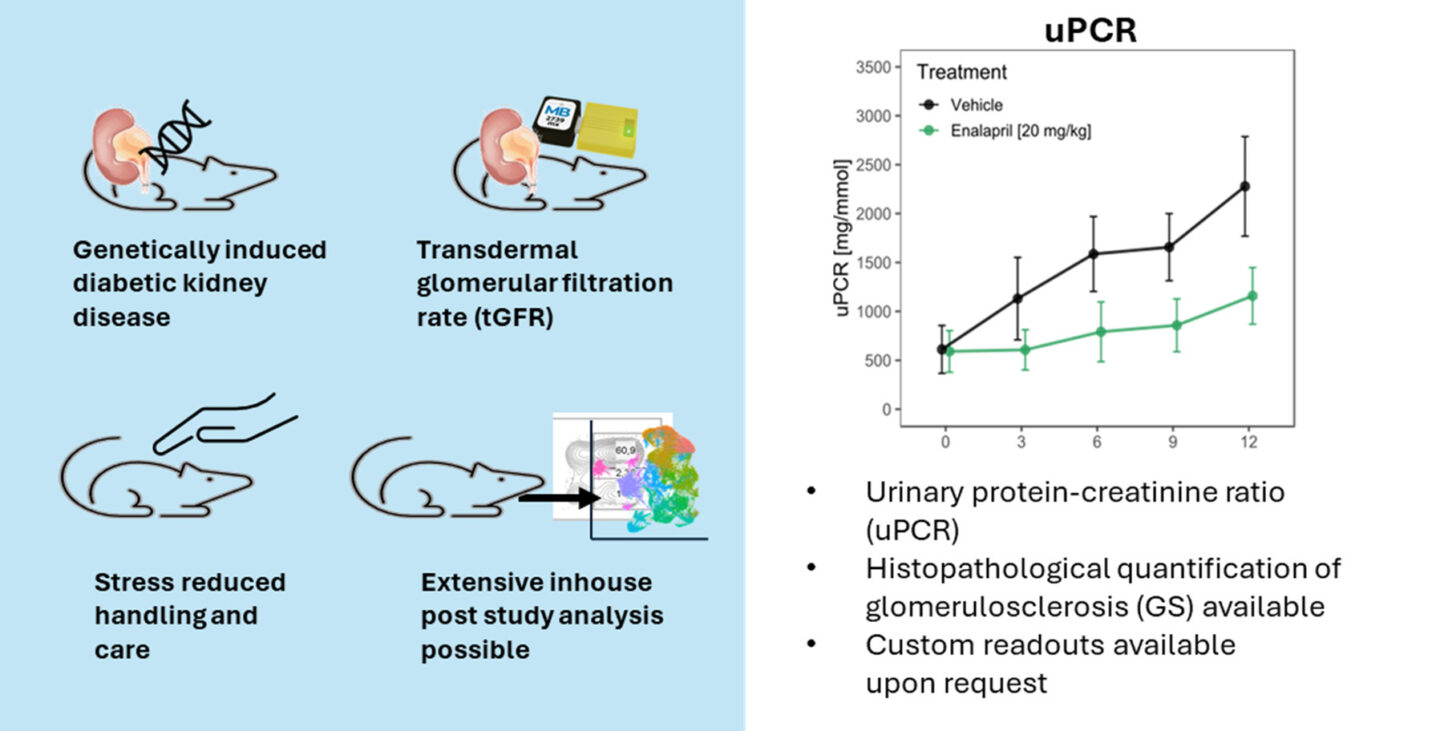Evotec’s in vivo team offers a wide variety of established and validated models in the area of metabolic diseases (Muscle xenograft, Intravitreal and subretinal injections, humanized models). All our models meet the highest quality standards. Flexible and custom study designs are available for discussion. Leveraging Evotec´s advanced capabilities, a wide range of in-house readouts can be evaluated, including clinically relevent readouts, single cell analysis and omics. Our scientists bring outstanding expertise to in vivo studies for drug discovery. Providing consultation, support and execution of in vivo studies delivering the highest quality results.
Model of Accelerated Diabetic Kidney Disease
This model is the first choice for compound testing in the field of diabetic kidney disease. Measuring the onset and progression of proteinuria facilitated by renin overexpression. Histological lesions are characterized by primary glomerular sclerosis ranging from mild to severe histological scores with secondary mild tubular lesions.
Accelerated diabetic kidney disease (aDKD) – Renin-AAV db/db Unx
- db/db mice + uninephrectomy (Unx)
- Hypertension driven by Renin-AAV
- High translatability for human T2D
- Comorbidity: Hyperglycemia and hypertension
- Standard of care benchmark available
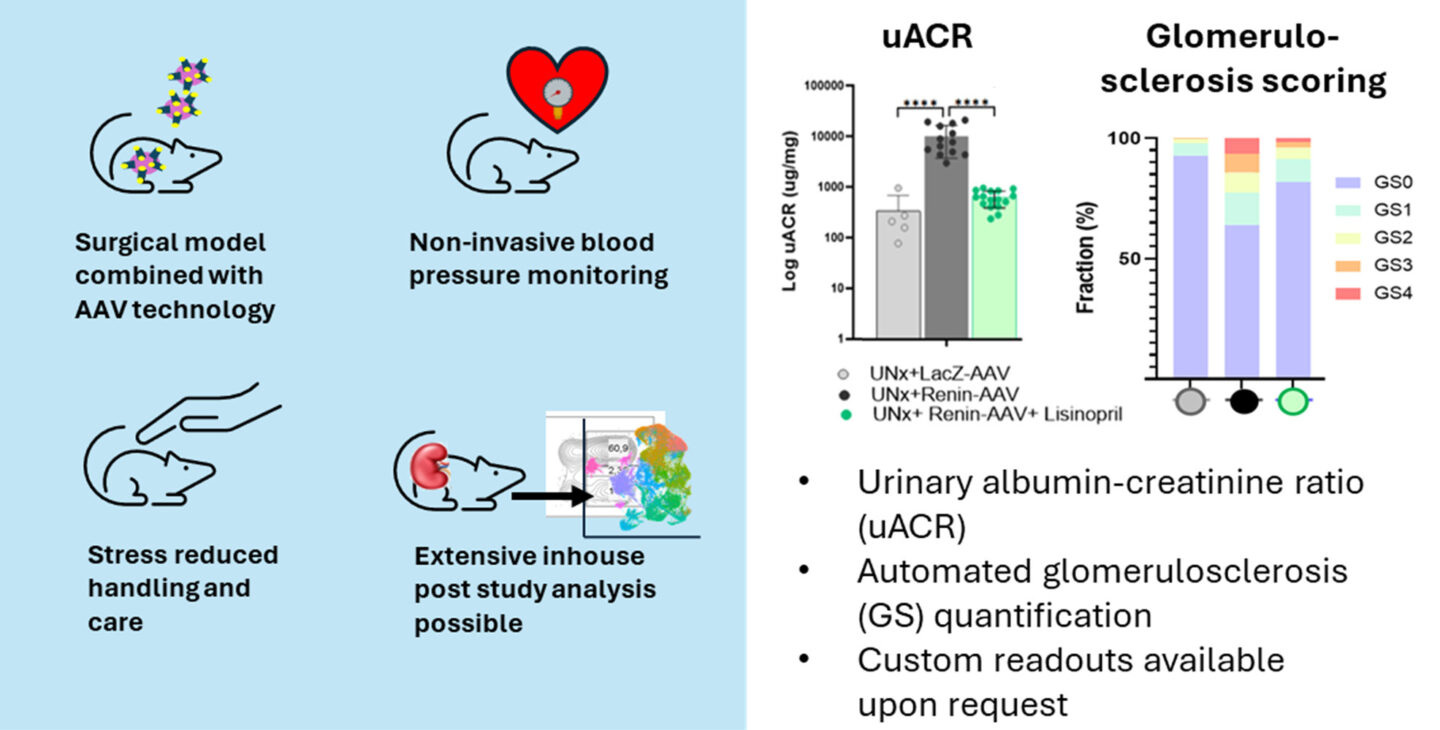
Unilateral Ureteral Obstruction
This model is widely used to study progressive renal interstitial fibrosis and obstructive nephropathy. Surgical ureter ligation induces renal hemodynamic changes and increased intrarenal hydrostatic pressure leading to tubular injury and cell death, interstitial fibrosis, tubular atrophy and a significant inflammatory response.
Progressive model of renal interstitial fibrosis and obstructive nephropathy – Unilateral ureteral obstruction (UUO)
- Progressive model of CKD
- Surgical ligation of the ureter in C57/BL6 mice
- Tubuluointerstitial inflammation and fibrosis
- Renal hemodynamic changes and increased intrarenal hydrostatic pressure
- Reference compound available
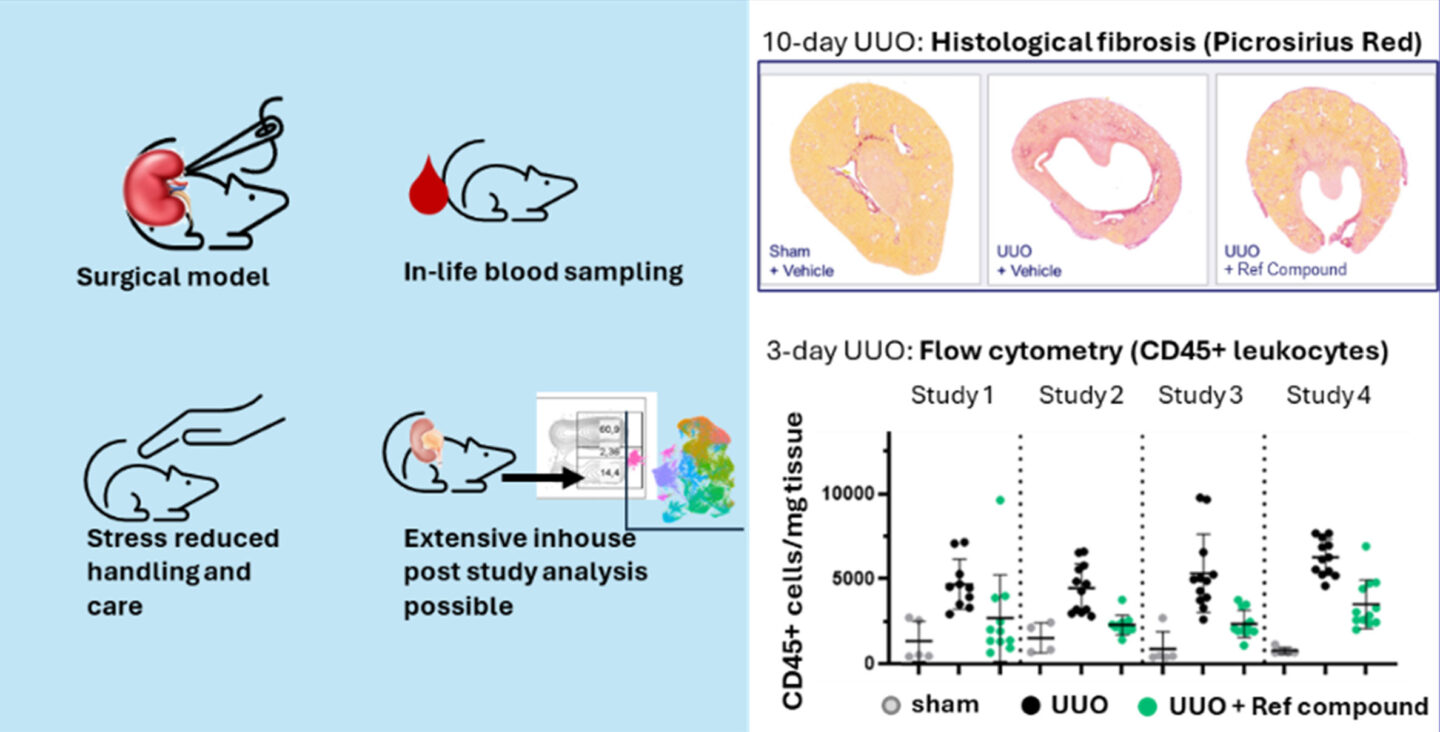
Acute Model of Renal Ischemia Reperfusion Injury
This model exhibits features of acute kidney injury (AKI). Surgically induced ischemia (reduction in blood flow) followed by reperfusion (restoration of blood flow) results in acute tubular epithelial cell injury caused by energy depletion and oxidative stress. Tubular injury is followed by tubular atrophy and a marked inflammatory response.
Model of acute kidney injury (AKI)
- Surgical temporal clamping of renal pedicle(s) in C57/BL6 mice
- Two model of AKI available (bilateral model and unilateral model with contralateral nephrectomy)
- Acute tubular injury phase inducing loss of renal function 24h post injury
- Reference compound available
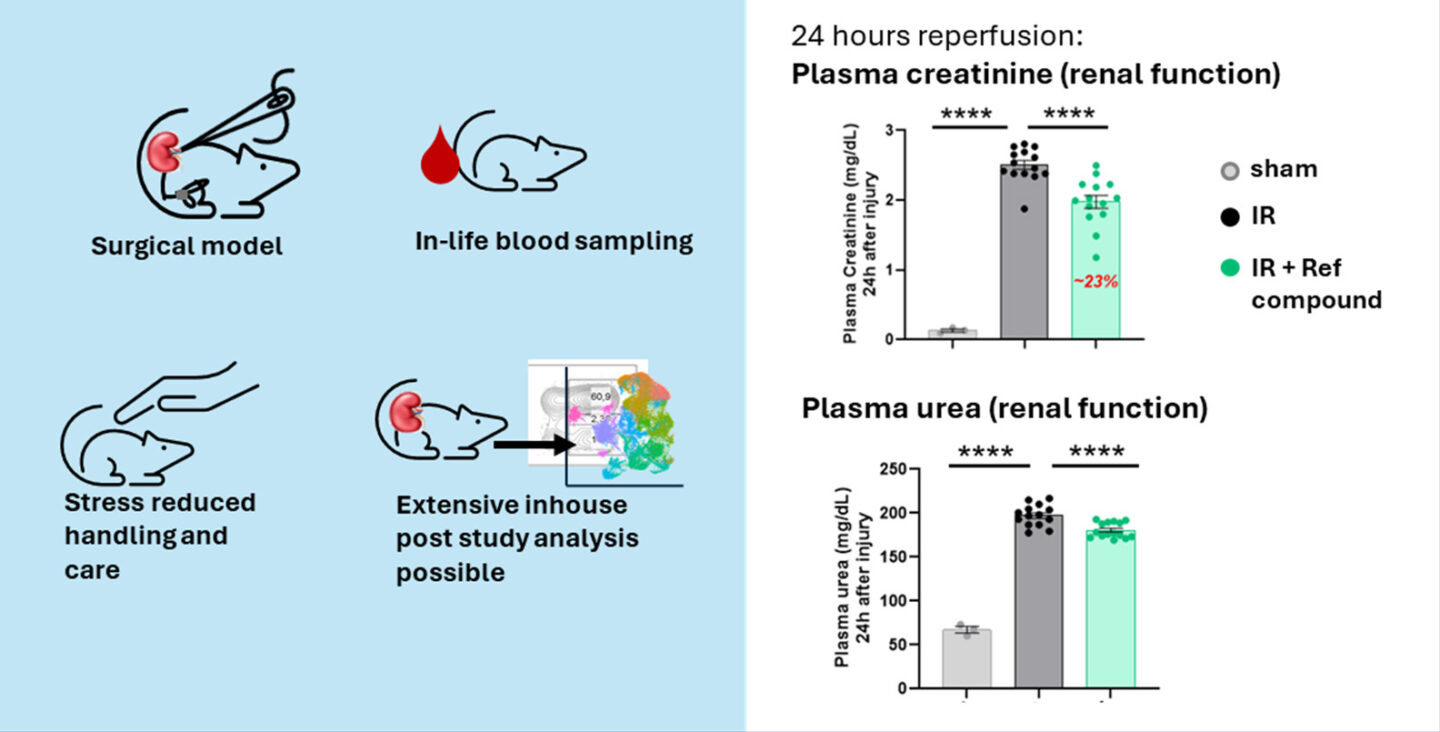
Chronic Model of Renal Ischemia Reperfusion Injury
This model exhibits features of the transition of acute kidney injury (AKI) to chronic kidney disease (CKD). Unilateral surgically induced ischemia (reduction in blood flow) followed by reperfusion (restoration of blood flow) results in acute tubular epithelial cell injury caused by energy depletion and oxidative stress. In this model, the tubular injury is less severe than in AKI models. Failed repair of tubular injury progresses to interstitial fibrosis, tubular atrophy and a marked inflammatory response.
Model of acute kidney injury (AKI) to chronic kidney disease (CKD) progression – Renal ischemia reperfusion injury (IRI)
- Surgical temporal clamping of renal pedicles in C57/BL6 mice
- Acute tubular injury phase followed by marked interstitial fibrosis and inflammation
- Model of maladaptive tubular repair
- Reference compound available
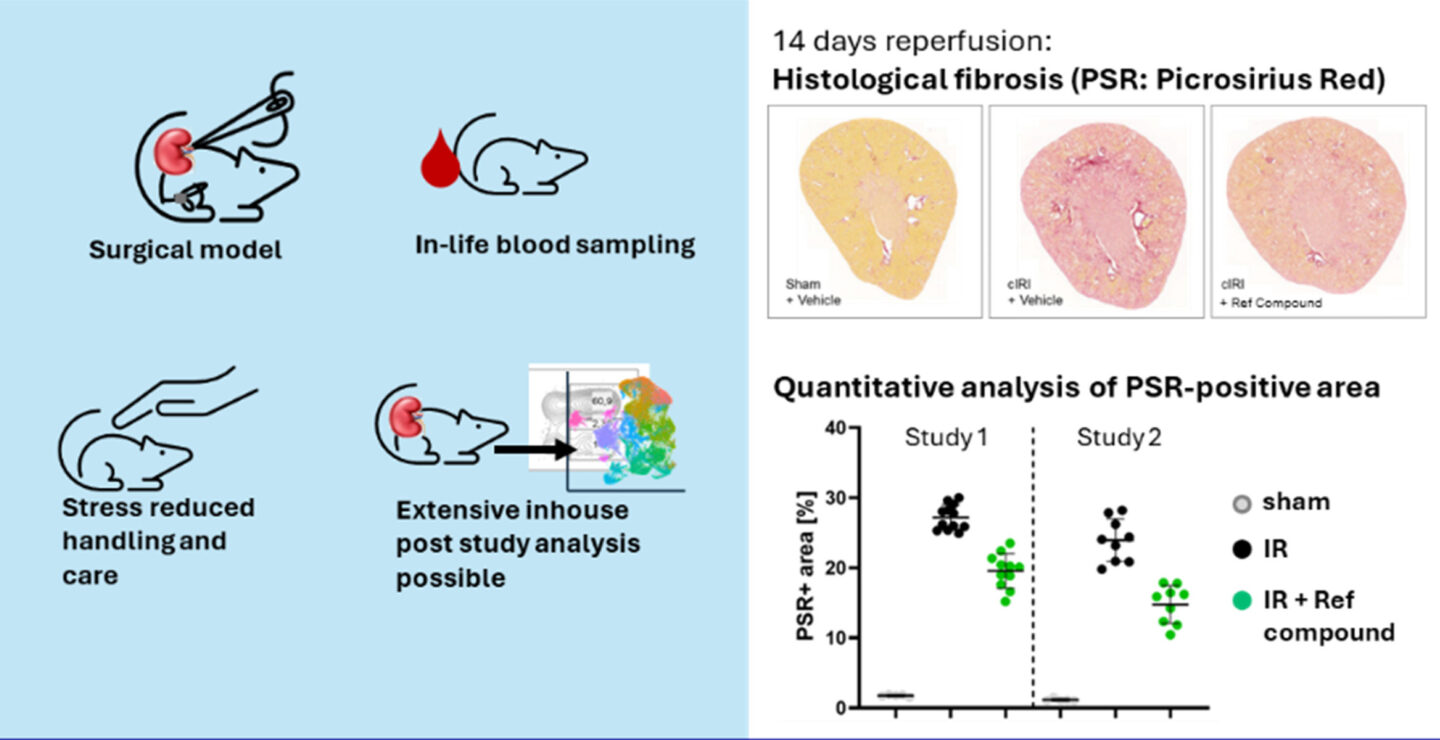
Diabetic Kidney Disease – ZSF1 Rat
This model is the gold standard for compound testing in rats for diabetic kidney disease. Rats spontaneously develop type 2 diabetes, hypertension, hyperlipidemia and metabolic syndrome, resulting in progressive proteinuria and mild histopathological changes. Standard-of-care interventions have been successfully validated in this model
A model of early progressing diabetic kidney disease (DKD) – ZSF1 rats
- Model genetically driven by absence of leptin receptor
- Spontaneous hypertension and diabetes
- Characterized by progressive proteinuria and moderate histological changes
- Standard of care benchmark available
